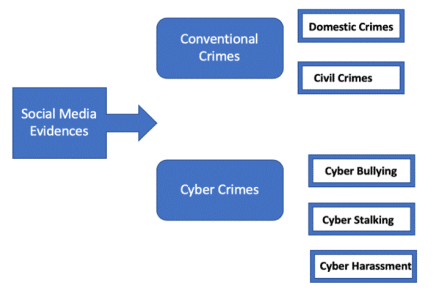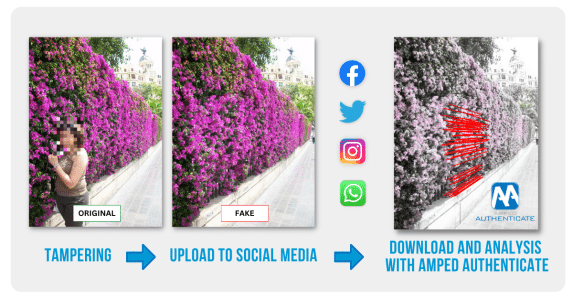The Impact of Social Media on the Law: How Online Posts Can Be Used as Evidence Would be Perfect – Guest Post

The effect of social media can hardly be exaggerated. In less than a decade, it has influenced global politics, altered commerce, and disrupted journalism by providing a platform for quick communication. With social media penetrating every aspect of human lives, it is not so rare to find instances of its usage within the legal domain as well.
As the nature of social media activities expands, it is undeniable that the effect and influence it has on society at large are far more impactful than initially visualized. From business to politics, culture to education – every sector is being shaped by social media. The law is no exception either. Several cases highlight the willingness of the court to permit the discovery and use of social media information, given the attorneys can establish its relevance to the case. When working on a case, lawyers can search social media on the parties involved to gather evidence.
In today’s legal landscape, not utilizing social media in cases can lead to costly oversight, and in some cases, it could be the difference between winning and losing a case. Any statements or representations made on social media used as evidence will be scrutinized for their relevancy and authenticity. This blog post will cover how social media is used as evidence, what kind of social media evidence is admissible in a trial, and how to authenticate that information.
Understanding Social Media Evidence
Gathering evidence is an integral part of any case and is of two kinds – people (witnesses) and things (exhibits). An exhibit is physical or documentary evidence brought before the judge and jury, where social media information shows up frequently.
Social media evidence means any data or information housed within a social media platform, such as Facebook, Twitter, or LinkedIn, that is preserved to support litigation. The information can be in the form of posts, photos, comments, and replies, among others.
To use social media as evidence in court, the guidelines listed in the Federal Rules of Evidence 901 must be followed. FRE 901 demands authentication of digital evidence – that is, attorneys will have to show that the evidence did exist on that platform and in the manner claimed. This prevents both parties from falsifying evidence by altering screenshots, which is easily possible with technological advancements.
Let’s understand social media evidence better by seeing how it’s used in criminal cases.
How Social Media Is Used as Evidence by Prosecution in a Criminal Court Case Proceedings?
Two prominent ways social media posts can be used as evidence by the prosecutor against the court are as character evidence against a defendant or to prove elements of a crime.
1. Using Social Media to Provide Evidence for Elements of a Crime
To be convicted of a crime, the prosecution must prove every element beyond a reasonable doubt. Social media information might be used as evidence to back those crime elements. For instance, if someone has been accused of theft by unlawful taking, the prosecution must prove the given statement to show that person is guilty:
“One unlawfully transferred, took, or exercised control over another person’s unmovable or movable property or land with the intent of depriving the owner of the land/property or using it for their own gain.”
Here’s how information on social media can act as evidence:
- The prosecutor may find a photo of the accused on social media with the stolen property. This can serve as evidence that supports that the accused, indeed, has exercised unlawful control over someone’s else property.
- They may find chats and conversations on social media pointing to how the accused wanted to use the property soon. This will further prove the last element of the crime that they did intend to use the property to benefit themselves.
On the other side, the defendant’s lawyer can look for timestamps, history, context, and other related things for social media posts submitted by the prosecutor that will help them to prove their client is not guilty.
2. Using Social Media as Character Evidence Against a Defendant
While prosecutors aren’t generally permitted to present evidence against the character of a defendant, some situations allow it. For instance, if the defendant has stated that they are honest, they have opened the door for the prosecution to present evidence to prove the contrary. As such, the prosecution can look for social media to find posts related to fraudulent activities.
At the same time, the defendant’s lawyer also has the right to use social media posts as evidence to defend the wrongfully accused. They can counterattack the prosecutor’s statements by learning beforehand about their client’s intention behind posts and then finding proof to substantiate that.
Are All Social Media Posts Accepted as Evidence?
The degree of social media used as evidence will vary according to each trial. In most trials, the attorneys or lawyers work it out amongst themselves and agree to a defined time frame from which the request will not proceed. For instance, they can request only videos and pictures from the date of the crime or accident to 3 months prior.
Another critical aspect of social media evidence is privacy and ethical considerations. Even if the social media account is private, the content can still be presented in court if the requested information is relevant to the trial. Or, if you filed a personal injury lawsuit and the other party’s lawyer requested access to your social media profile, they would likely receive only partial access or information within a specific time frame relevant to the case.
How Do You Retrieve Social Media Information as Evidence?
If lawyers or attorneys intend to use social media posts or photos to defend their clients in court, they must obtain the evidence ethically. Some essential practices to follow to retrieve social media evidence are as follows:
- Capture everything carefully: Research and document as much as possible surrounding the person the case is against. Try to obtain a complete profile alongside metadata information such as URLs, timestamps, and IP addresses – a mere screenshot may not effectively convince a court of the authenticity of the evidence presented.
- Ensure context and integrity: For evidence to be admissible in court, it must be untampered. Ensure that your collected social media activity records offer a clear and direct picture of any posts or photos – with no edits or manipulation.
- Relying on ethical methods: Attorneys should be cautious and mindful not to violate ethical boundaries when seeking social media evidence.
- Under ABA Model Rule 4.2, attorneys and their agents are prohibited from sending a connection request to the unrepresented party through social media.
- Under ABA Model Rule 8.4, an attorney violates rules when utilizing deceptive measures to access a private account.
- Under ABA Model Rule 3.4, “a lawyer shall not unlawfully obstruct another party’s access to evidence or unlawfully alter, destroy, or conceal a document or other material having potential evidentiary value.”
How Do You Authenticate Evidence Found on Social Media?
FRE 901(14) has established specific rules for electronic data (such as social media posts) that are admissible in court. Even so, different courtrooms and different states will vary in the requirements for allowing social media as evidence in a case.
Generally, there are three main principles to follow for supporting the authenticity of social media evidence:
- Proof of account ownership or authorship: This circumstantial evidence requires a thorough record of supporting witnesses or documents. For instance, a Facebook page does not simply prove that a certain someone is responsible for the content posted on that account. Instead, what needs to be submitted are:
- Metadata and digital signatures as stated in FRE 902(14).
- Witness accounts that point that an individual is indeed the author of posts and owner of the account.
- Forensic preservation: The way one obtains and stores electronic information matters. Full metadata must be preserved and should not undergo change or alterations. All transcriptions or information transfers should be appropriately documented. One can also request the social media channels to provide specific data, such as IP addresses, that further substantiate the location, time or computer from which the post was made.
- Establish reliability: How the social media platform ensures the safe collection and storage of personal info can also support authentication. If they make use of measures such as email confirmation, a two-factor authentication, or “verified” public accounts, this offers support to the claim that the social media evidence presented is reliably associated with a particular individual.
Social media can be easily destroyed or modified, so attorneys must consider upgrading their litigation readiness strategy to ensure the preservation of information on social media. In addition, a record retention policy that guides clients and refrains them from deleting social media information can further help attorneys.
Final Words
The impact of social media on law is profound, specifically as evidence in legal proceedings. Many courts and countries have permitted attorneys to look for social media information to support their clients in trials. The important thing is to ensure the relevancy and authenticity of social media posts.
For social media evidence to be admissible, it is essential to prove the circumstances under which it was procured, the digital chain of custody, and how the investigator preserved such information. Any small error pointing to unethical practices in acquiring social media evidence can significantly impact the case and its outcome.
So, be mindful while gathering evidence and request a court order/warrant to legally obtain private social media information. Take help from social media investigators or companies to acquire relevant information and ensure proof of authorship. Beyond that, develop strategies and policies that help use social media ethically in legal proceedings.
Author Bio:
My name is Michel Ethan, and I am currently working as a Marketing Manager at Blue Mail Media, Inc.
I have over 13 years of experience in digital marketing, B2B marketing, communications, and brand marketing.
Twitter Profile: @michaelethanbmm
LinkedIn Profile: https://www.linkedin.com/in/michaelethan/
Facebook Profile: https://www.facebook.com/michael.ethan.7549




Recent Comments